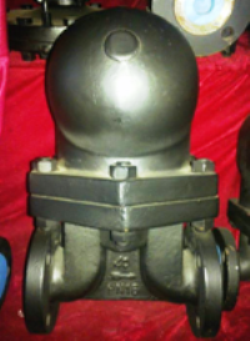A ball float steam trap is created to remove condensate and air from steam systems while retaining steam for orderly operation. At the heart of the trap is a conical float that proceeds vertically within the trap’s chamber. This float is connected to a valve mechanism.
WORKING
A ball float steam trap sets off through a straightforward yet productive mechanism. Inside the trap, a conical float is placed in a chamber connected to a discharge valve. As steam condenses into water , the water level inside the chamber increases . This rise causes the float to lift, which in turn opens the discharge valve, permitting the condensate to exit the system.
When the condensate is expelled and the water level decreases, the float drops, closing the valve to prevent steam from escaping. This automatic operation ensures continuous discharge of condensate without losing steam, making the process highly efficient. The design accommodates varying condensate loads, ensuring reliable performance across different conditions.
ADVANTAGE
● Their ability to discharge condensate without losing steam results in considerable energy savings and improved efficiency.
● The automatic operation reduces the need for manual intervention, lowering
maintenance costs and decreasing downtime.
● These traps are highly reliable, handling varying condensate loads effectively,
which enhances the overall performance and longevity of your steam equipment.
INDUSTRIES USING
● brewing
● distilling.
COMPONENTS
● A chamber with a floating ball
● An outlet valve
● Casing
Description:-
1. Body: Carbon Steel, Stainless Steel, Ductile Iron
2. Class: PN16, PN25
3. Connection Type: Flanged, Threaded or Welded
4. Size: 1″, 1/2″, 3/4″
5. Disc: 2Cr13, SS304
6. Nominal Diameter: DN15 to DN100
7. Nominal Pressure: PN10 to PN64
Showing the single result



